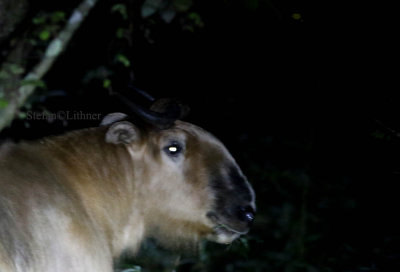
Mysterious and mythic mammals in China 2016 |
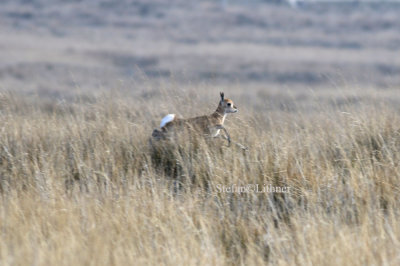
About ten years ago nobody knew for sure if any Przewalski´s gazelles (Procapra przewalskii) still existed in the wild. |
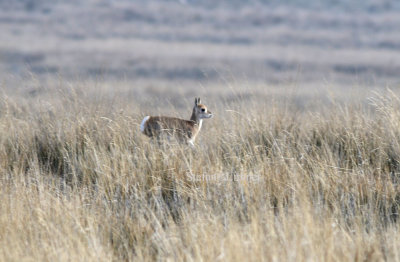
Recent studies reveal between 1544 and 1635 animals within about 250 km² in four scattered and declining populations. (IUCN) |
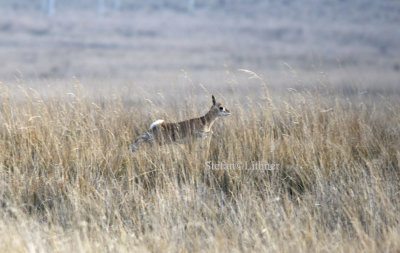
Major threat is increasing human pressure due to propagation and fragmentation of remaining habitat. |
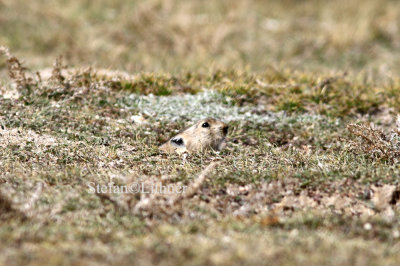
In order Lagomorpha you find two families; Leporidae (hares and rabbits) and Ochotonidae (pikas). |
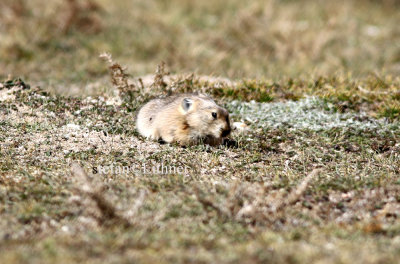
According to Smith & Yan Xie; A G to the Mammals of China 24 species of pikas are recognized in China. |
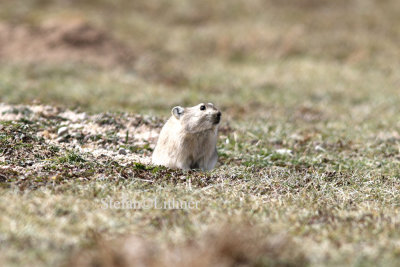
In the areas we visited, this species; black-lipped pika (Ochotonacurzoniae) was abundant in the alpine zone. |
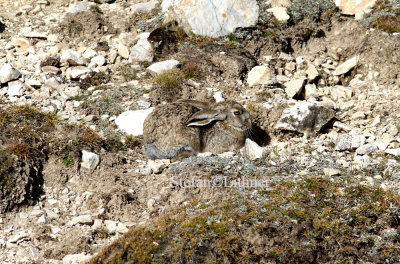
The wolly hare (Lepus oiostolus) is one of ten species of hares recognized in China. (Smith & Yan Xie; A G t t Mammals of China) |
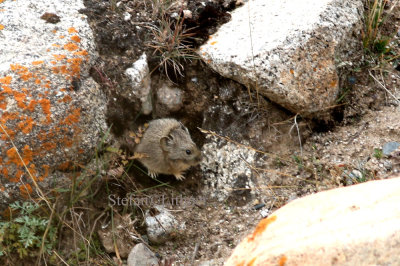
Our second pika; Gansu pika (Ochotona cansus) |
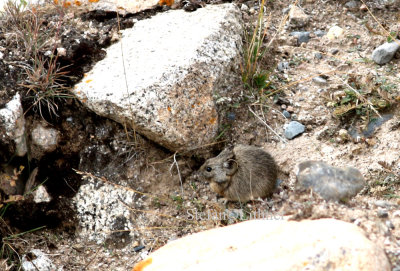
Gansu pika (Ochotona cansus) |
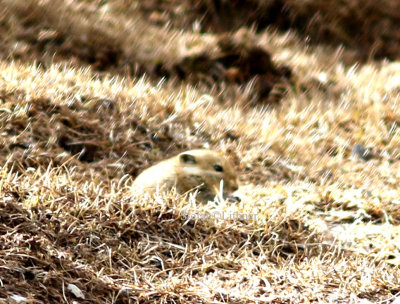
Blyth´s montain vole (Phaiomys leucurus) is today the only species in its genus. Photo taken above 4550 metres a s l. |
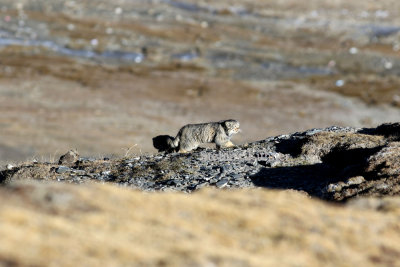
Pallas´s cat (Otocolobus manul) was originally placed in the family Felis by Peter Simon Pallas who described it . |

It is found insteppes with rocky outcrops, hilly deserts, in alpine zone from 450 up to at least 5050 meters a s l. |

They cannot negotiate deep snow (continous cover (15 - 20 centimeters deep) in capturing prey. |

It is It is widely distributed in Asia. Half of its known distribution is in China. |
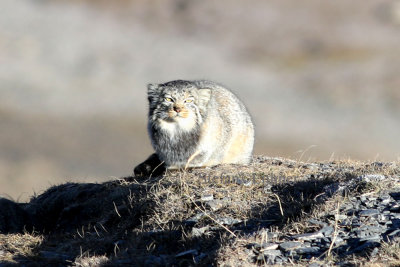
It has been treated as Near Threatened by the IUCN since 1996, and the world population is declining. |

Major threats are degradation and segmentation of habitat, hunting and depletion of their prey by poisoning and overhunting. |
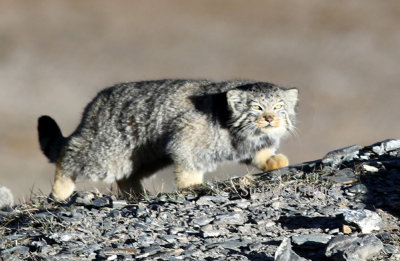
Pallas´ cat´s major prey consist of pikas and rodents. (see above) |
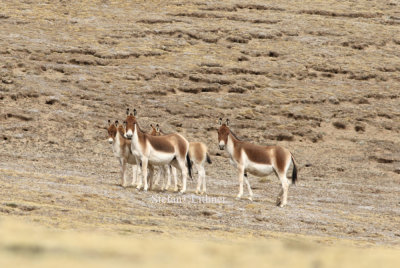
Kiang (Equus kiang). Currently the IUCN recognizes seven species of wild “horselike” species (Equidae). |
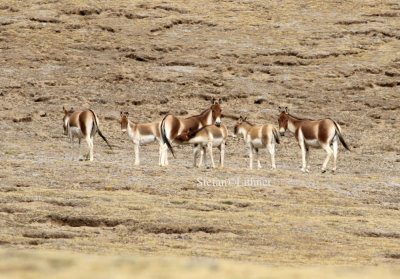
Three zebras (Grevy´s-. steppe-, and mountain-), Przewalski´s horse and 3 ass-like species (kiang, onager and African wild ass). |

Taxonomy has long been debated. IUCN lists 16 synonyms. |
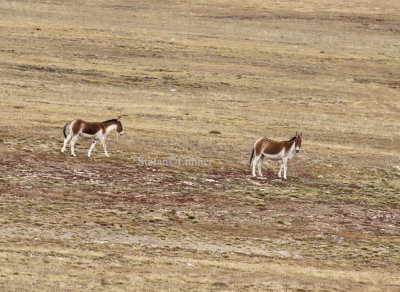
During taxonomic revisions 1967 - 1980 the onager (E. henionus) was separated from the kiang. |
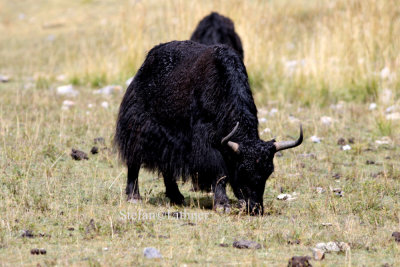
Wild yak (Bos mutus), particularly males differ from domestic yak (Bos brunniens) and hybrids in several details. |
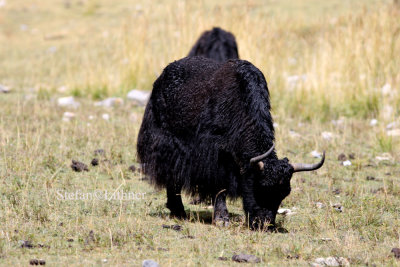
Shoulder height may reach 2 meters, hump is much bigger, long hairs only on chest and abdomen. |

Glover´s pika (Ochotona gloveri) was our third pika during the tour. |
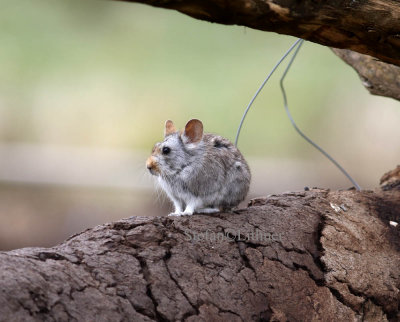
This pika inhabits remote areas unlikely to be affected by human activity. Yet thrives among human settlements in such areas. |
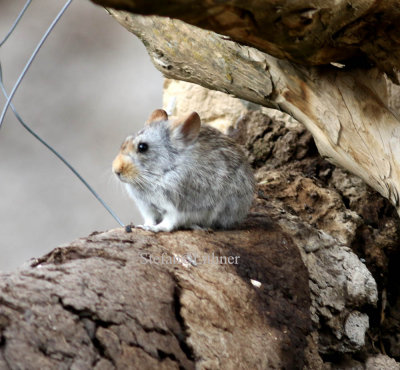
Glover´s pika on mud- or dung-wall. |

Himalayan marmot (Marmota himalayana) is one of four species of marmots occurring in China, all geographically separated. |

White-lipped deer (Przewalskium albirostris) sometimes placed in genus Cervus, is by IUCN treated as vulnerable and declining. |

Bharal (Pseudois nayaur) is often referred to as Himalayan blue sheep, but is not a sheep but a caprid (goat relative). |

The bharal is thiving well in the moutaneous central Asia from 2500 to 5500 metres a s l. |

The deer occurs in scattered populations over eastern Tibet and adjacent provinces. |
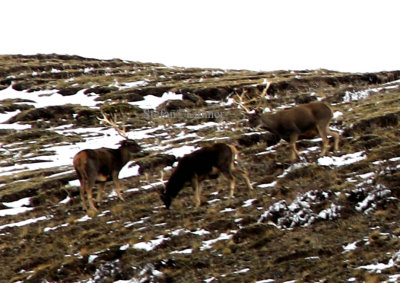
Its habitat consists of coniferous forests and grasslands between 3400 and 5100 meters a s l. |
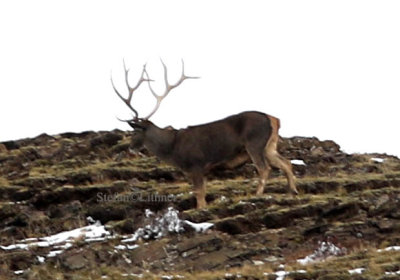
Its population was estimated to about 7000 animals in late 1990-ies and expected to decline by 30% over the next 3 generations. |
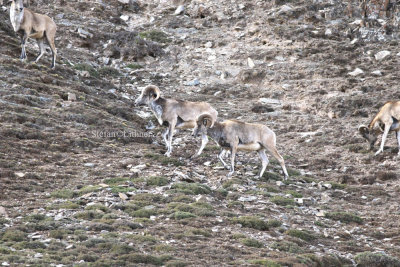
Argali (Ovis ammon) is one of six species of Ovis in the world. Some authors however recognize a seventh (O. polii) |
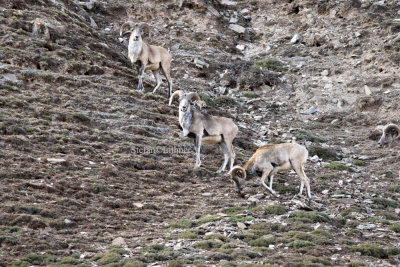
At present Argali (Ovis ammon) is widespread over a vast territory in Asia, and separated into several populations. |
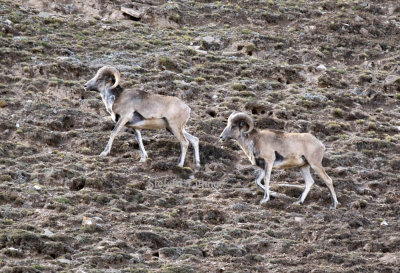
Some poulations are still subjected to discussion and more research is needed for taxonomic classification. |
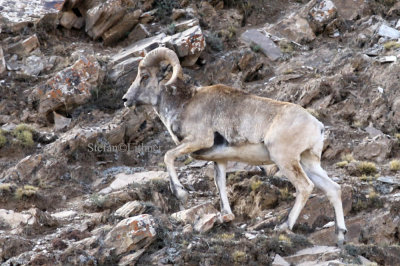
It inhabits mountains, steppe valleys, rocky outcrops and also deserts from 3000 to 5500 meters a s l. |
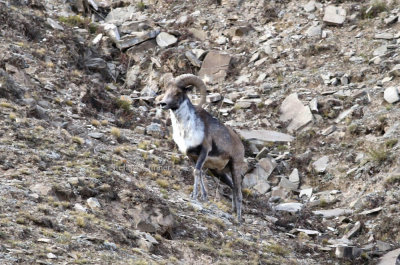
Argali (Ovis ammon) is treated by the IUCN as NT (near threatened) and the population is declining. |
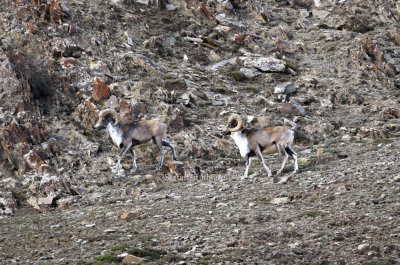
Its major threats are overhunting incl poaching (for meat), |

...as well as competition, displacement and possibly disease transmission by domestic livestock and habitat loss (IUCN) . |

Tibetan wolf (Canis lupus chanco) has by some authors been suggested to be a separte species. |
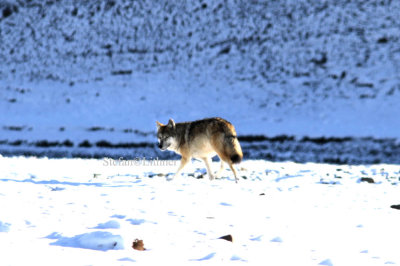
The genus Canis is known to hold some species very similar to each other. |
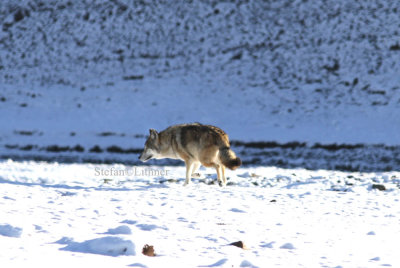
Our group cold depict nothing supporting this suggestion. |
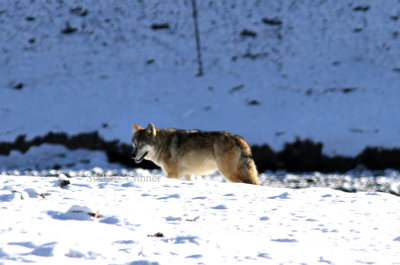
Tibetan wolf (Canis lupus chanco) |
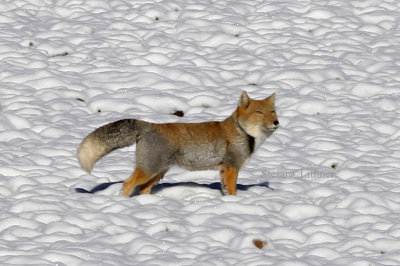
Tibetan fox (Vulpes ferrlata) is widespread on the steppes and semi-deserts on the Tibetan Plateau (IUCN) |
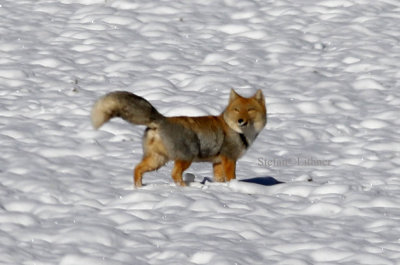
Tibetan fox (Vulpes ferrlata) is also found in northern India and Nepal between 2500 and 5200 metres a.s.l. |

Tibetan fox (Vulpes ferrlata). On the Tibetan Plateau it occurs together with the red fox (V. vulpes) |

Tibetan gazelle (Procapra picticaudata) is nearly endemic to China. |
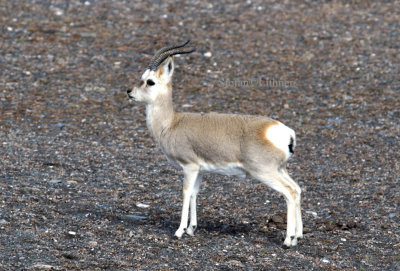
Tibetan gazelle (Procapra picticaudata). Only about one percent of its didtribution-area lies outside China; Ladakh and Sikkim |
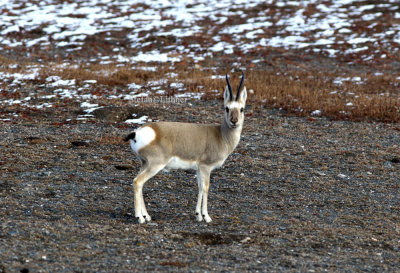
Tibetan gazelle (Procapra picticaudata). It is found up to 5750 metres a.s.l. |
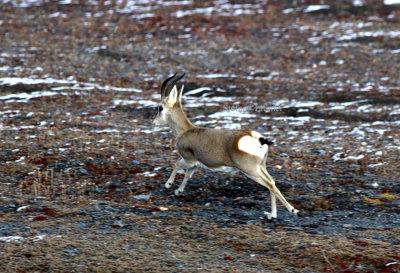
Tibetan gazelle (Procapra picticaudata). The population is declining. |
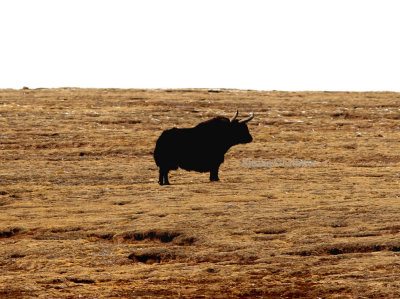
wild yak (Bos mutus) |
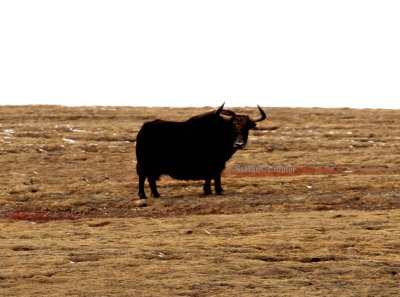
wild yak (Bos mutus) |
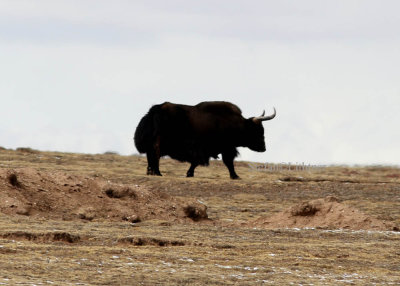
wild yak (Bos mutus) |

kiang (Equus kiang) |

Chiru (Pantholops hodgsonii) |

Chiru (Pantholops hodgsonii) |
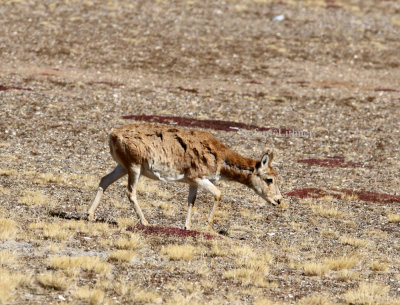
Chiru (Pantholops hodgsonii) |
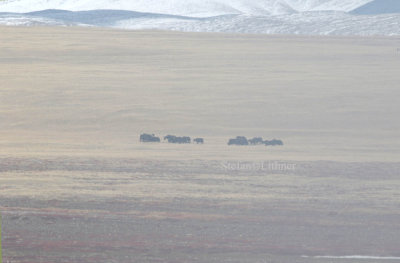
Heard of wild yaks (Bos mutus) |
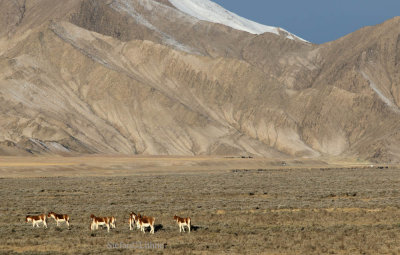
Kiang (Equus kiang) |
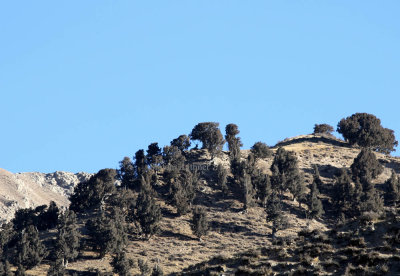
(Kansu) red deer (Cervus (elapus) cansuensis). The “supertaxon” Cervus elapus is currently debated. Several subspecies are ... |
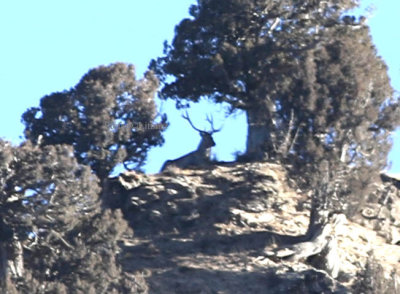
... recognized. IUCN states: “Further investigations need to be conducted (See trip report p. 28) |

Tibetan macaque (Macaca tibetana) |

Tibetan macaque (Macaca tibetana) |

red panda (Ailurus fulgens) |
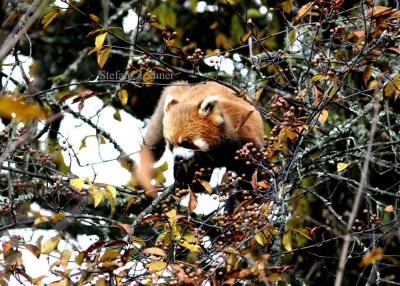
red panda (Ailurus fulgens) |
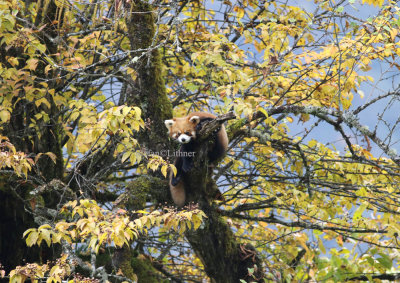
red panda (Ailurus fulgens) |

red panda (Ailurus fulgens) |
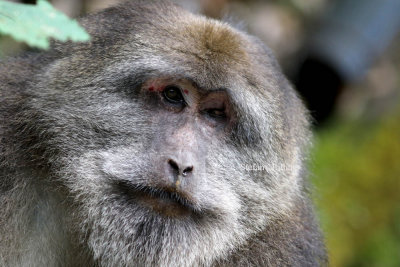
Tibetan macaque (Macaca tibetana) mature male possibly contemplating one of his females behaviour. (See trip report) |
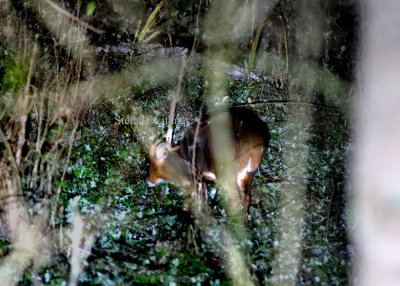
Reeve´s muntiac (Muntiacus reevesi) |

Reeve´s muntiac (Muntiacus reevesi) |
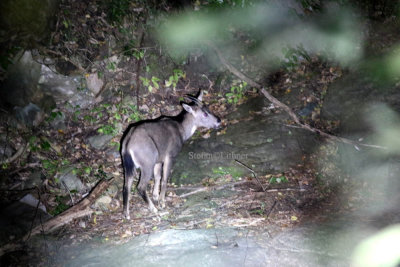
Chinese goral (Naemorhedus griseus) |
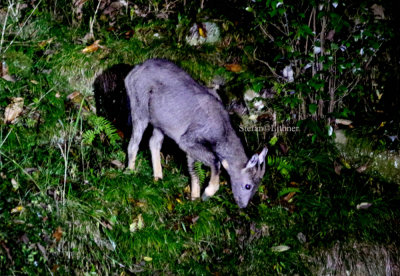
Chinese goral (Naemorhedus griseus) |
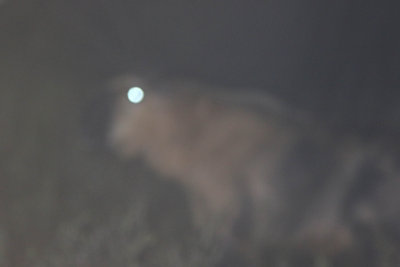
Our first golden takin (Budorcas taxicolor bedfordi) initially appeared like gnomes in the gentle forest mist. |

Golden takin. Our firs individuals were seen at night during spotlighting. |
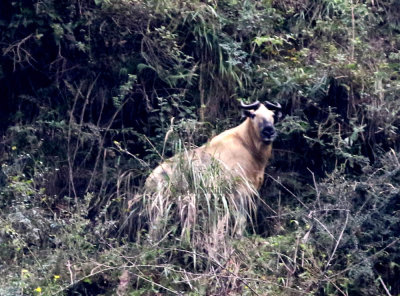
Takin occurs in four subspecies in four areas not overlapping. |
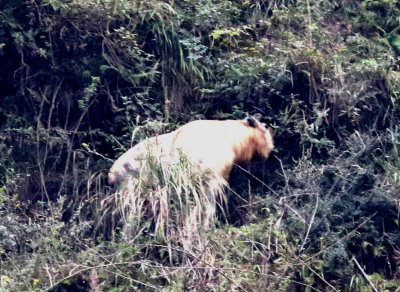
At least two of the subspecies; golden and Sichuan takins occur in various skin-colour. They can be golden ... |
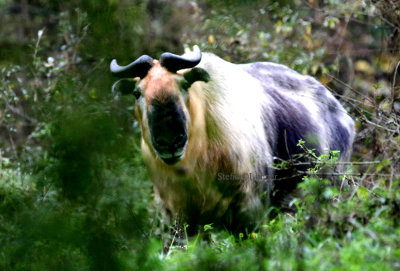
... but can also be brownish, pale with a pinkish tinge or with a beige tinges. |
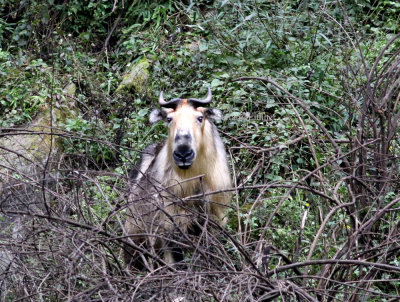
Best way to assess what subspecies it is, is to study where you are. (See trip report p 29) |
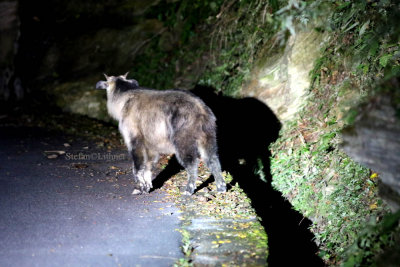
Golden takin; calf |
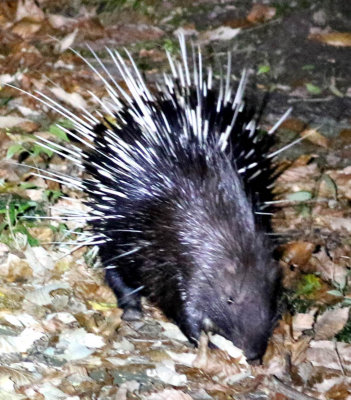
Malayan porcupine (Hystrix brachyura) |

Tufted deer (Elaphodus cephalophus) may now be endemic to China, not seen in Myanmar since 2008. (See trip report p 28) |
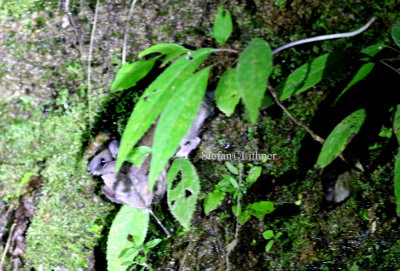
Confusian niviventer (Niviventer confucianus). (See trip report pp 23-24). |
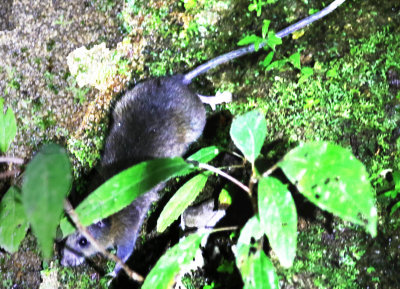
Confusian niviventer (Niviventer confucianus). (See trip report pp 23-25). |
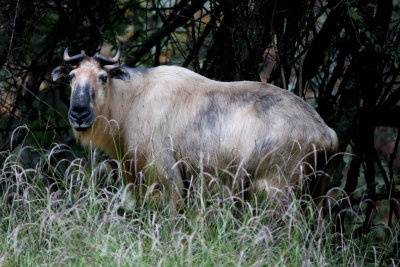
According to Smith & Yan Xie it may reach a weight of 600 kilograms,making it the biggest goat-relative (Caprinae) in the world. |











